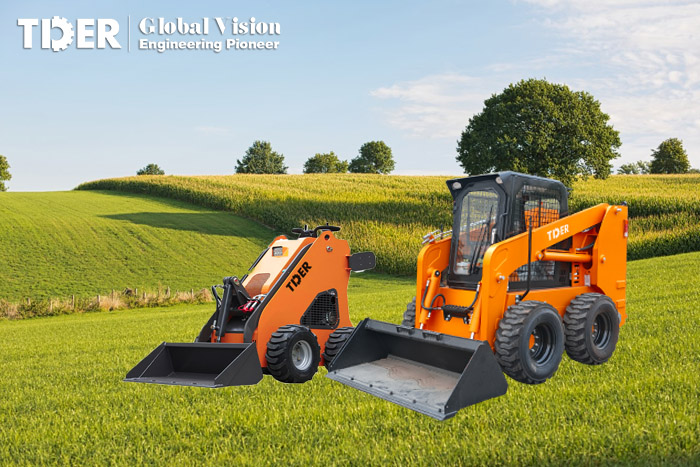Service Hotline:86-0592-5681408 / 86-17346269651
I. Definition and Working Principle of Skid Steer Loaders
The skid steer loader is a compact and versatile piece of construction equipment that achieves zero-radius turning and pivoting through differential speed control of the wheels on both sides. It is ideal for operations in confined spaces. Equipped with lift arms at the front that can be fitted with interchangeable attachments, it can efficiently perform tasks such as loading, transporting, digging, and leveling. With its powerful performance and agility, the skid steer loader plays a key role in construction and maintenance operations, significantly improving mechanization efficiency in limited work environments.
Thanks to its “small but powerful” characteristics, the skid steer loader is widely used across various sectors, especially in construction, agriculture, and municipal projects, where demand has notably increased. On one hand, land scarcity and rising labor costs are prompting industries to adopt compact and efficient machinery. On the other hand, the continual development of new use cases is expanding the machine’s application scope. As industries increasingly demand high-efficiency and highly maneuverable equipment, the future prospects for skid steer loaders are promising.
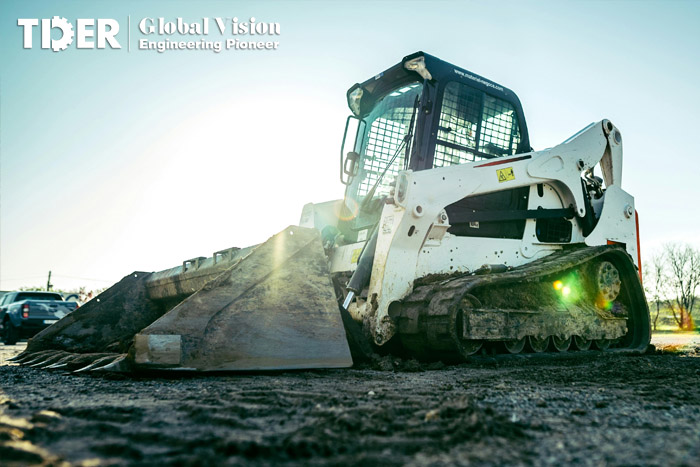
II. Key Factors to Consider When Choosing a Skid Steer Loader
Faced with numerous brands and models on the market, buyers should focus on the following key elements to ensure the equipment matches their operational needs and working environments:
1.Operational Capacity: Pay attention to parameters like rated load, engine power, and hydraulic flow rate. These determine how much material the skid steer can lift and what level of torque it can deliver to attachments. For example, typical load capacities range from 700 kg to about 1 ton, with smaller models suited for light-duty tasks and larger models reaching or exceeding 1.5 tons. Choose a model based on your working conditions—whether you're handling gravel or milling concrete.
2.Engine Performance: The brand and emission standards of the engine directly affect power performance and environmental compliance. High-quality engines (e.g., Cummins, Yanmar, Isuzu) offer stable output and longer service life. Emission compliance should align with local regulations, such as CE certification in the EU or EPA Tier 4 in the U.S. Engine power must also be well-matched to the hydraulic system to ensure it operates under high loads without overheating. Fuel consumption is another cost factor—compare fuel efficiency between models.
3.Attachment Compatibility: The core value of a skid steer lies in its multi-functionality—its ability to quickly switch between different attachments. Check the type of attachment interface (e.g., universal quick-attach systems) to ensure compatibility with common tools like buckets, breakers, sweepers, augers, and forks. Ideally, select a model equipped with a hydraulic quick-change device—some new models can switch attachments in just 20 seconds, significantly reducing downtime and improving efficiency.
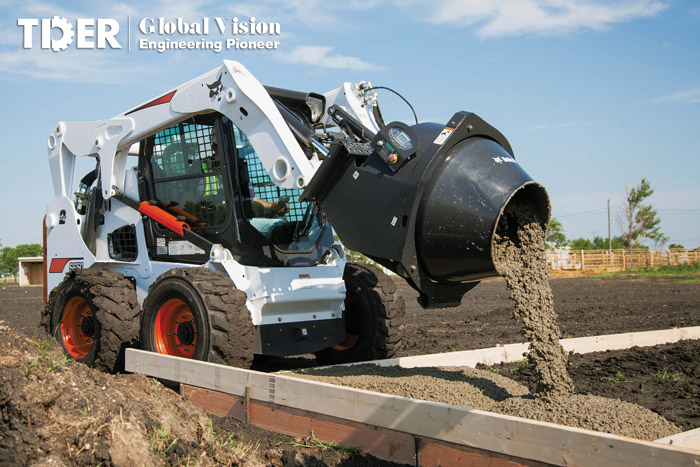
4.Adaptability to Work Environments: Choose between wheeled or tracked models based on terrain and surface conditions. Wheeled loaders are faster and suitable for solid, flat ground. Tracked models provide lower ground pressure and better traction, making them ideal for muddy or sloped areas. Note that tracked machines are costlier to purchase and maintain, but their longer lifespan suits frequent use. Also consider machine size—some ultra-compact models are under 1 meter wide, designed for indoor spaces. For operations in extreme conditions (cold, snow, dust), look for appropriate features such as cold-start systems or enhanced air filtration.
5.Safety Features: Safety is critical in construction machinery. Ensure the cab is certified with ROPS/FOPS to protect the operator. A wide field of vision, rear cameras, or 360° view systems reduce blind spots and enhance safety. Hydraulic systems should have safety lockout features to prevent misoperation. New models like the SANY ST230V even offer anti-rollover control systems for stability on slopes or uneven terrain. Review the manufacturer’s safety equipment list when comparing models.
6.After-Sales Service: Reliable operation depends on timely maintenance and support. Evaluate whether the brand has a solid local dealer network and fast parts supply. Quality manufacturers offer extended warranties and 24-hour fault response. Look into policies on full-machine warranties, engine and hydraulic pump coverage, and long-term technical support. If possible, choose a reputable brand and distributor for guaranteed service throughout the equipment’s lifecycle.
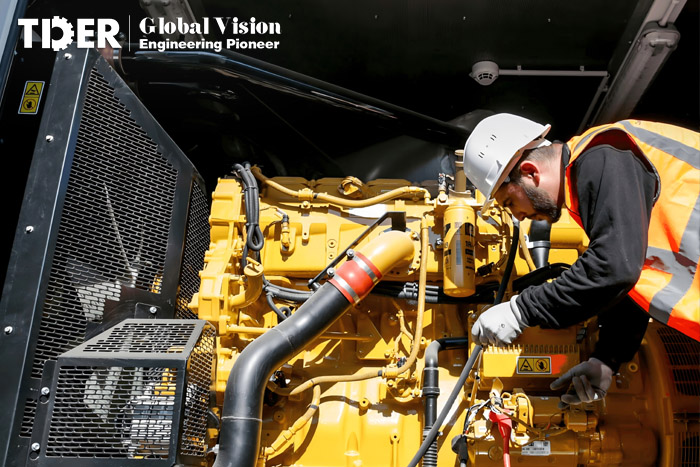
III. Industry Technology Development Trends
With advancing technology, skid steer loaders are evolving to become more eco-friendly, smarter, and multifunctional. Key trends include:
Electrification: New energy technologies are transforming construction equipment, and skid steers are no exception. Electric models powered by batteries and motors offer zero emissions and low noise, ideal for indoor and urban operations with strict environmental standards. With improving battery density and mass production, electric skid steers are expected to gain traction in sectors like municipal sanitation and indoor warehousing.
Intelligent Control Systems: Digital and automation technologies are increasingly integrated into skid steer designs to improve ease of operation and management efficiency. Major brands are equipping machines with remote monitoring and IoT diagnostics (Telematics), along with intelligent operational assistance systems. These improve efficiency, user experience, and safety by minimizing errors. In the future, semi-automated and even unmanned skid steer operations will likely play an essential role on smart construction sites.
Multi-function Development: Skid steers have always been known for versatility, and this is becoming more prominent with technological advancements. The key lies in a rich ecosystem of attachments and quick-switch capabilities. Standardized interfaces allow third-party manufacturers to develop specialized tools, expanding application boundaries. With ongoing progress in attachment design and hydraulic tech, skid steers will find new roles in niche sectors like underground pipeline construction and small-scale drilling—achieving true “multi-functionality, adaptable to all needs.”
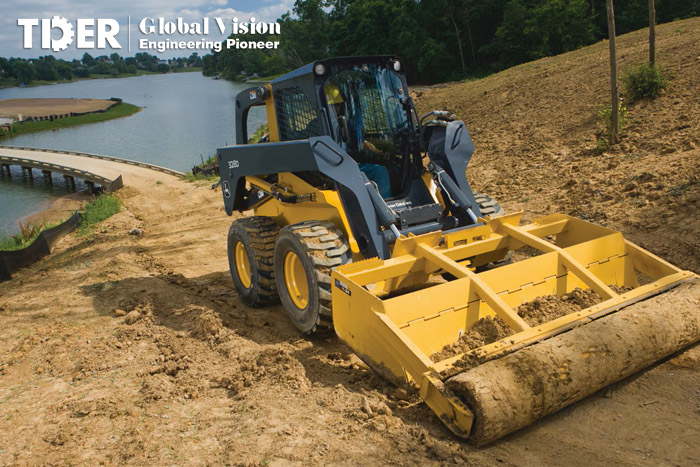
IV. Overview of Major Global Brands
Over the past decades, the skid steer loader market has developed into a competitive landscape led by international giants and rising new brands.
Globally, Bobcat (U.S.) is the undisputed pioneer of skid steers, launching its first model in the late 1950s and maintaining around 40% global market share today. Other major players include CNH Industrial (Case and New Holland), Caterpillar, and specialized small-equipment makers like Gehl and JCB. The top five manufacturers account for about 80% of global production. North America (46%) and Europe (32%) are the largest markets due to construction styles and strong demand for compact equipment. These regions also lead in product renewal and ownership rates. Many brands are innovating—Bobcat introduced the first electric model, while Caterpillar added smart attachment interfaces to consolidate their premium positions.
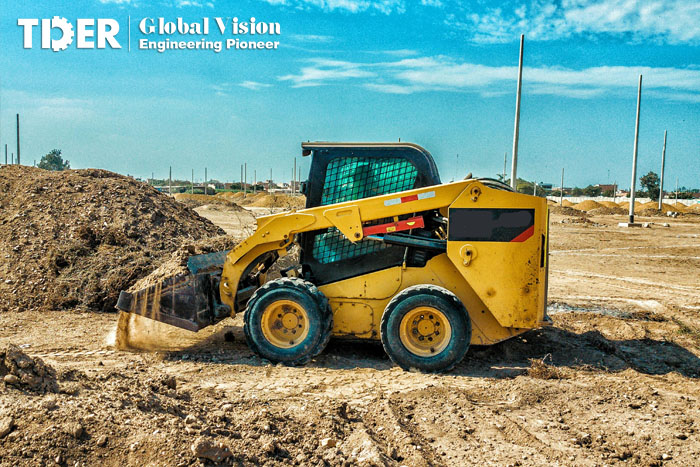
In China, the skid steer loader market started relatively late but has grown rapidly. In 2023, Chinese sales accounted for about 16% of global volume, and projections suggest this could rise to 20% by 2030. Notably, China’s exports exceeded 3,000 units in 2020, surpassing domestic sales—evidence that “Made in China” is gaining global acceptance through its cost-performance advantages.
Among emerging global brands, TDER has drawn significant attention as a construction and logistics machinery manufacturer. Based in China, TDER has stood out with its technological innovation and solid quality. Its product line includes wheeled and tracked skid steers ranging from 200KG Wheel Skid Steer Loader to 1500KG Crawler Skid Steer Loader, offering a wide selection to meet diverse customer needs.
TDER also prioritizes quality certification—its machines undergo strict quality control and have obtained international qualifications such as CE certification. Several models are equipped with EPA Tier 4 Final-compliant engines, meeting regulations in the U.S. and Europe. Leveraging China’s advanced manufacturing, TDER not only innovates in high-end fields but also considers international user demands. All models are compatible with international-standard attachments like those from Bobcat. This combination of local advantages and global quality gives TDER strong competitiveness in domestic and international markets. For users seeking reliable, durable, and cost-effective equipment, TDER is undoubtedly a brand worth serious consideration.
